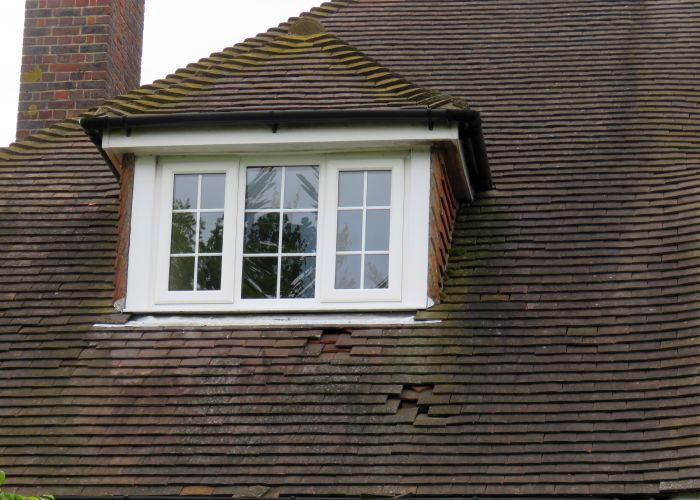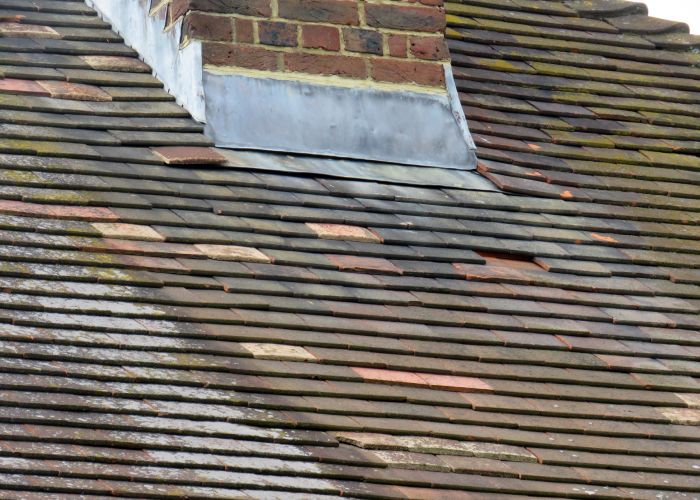The sound of rain tapping gently on your roof can be a source of comfort, but what happens when that rhythmic pulse turns into a relentless drumbeat of worry and woe? As homeowners, we hope our roofs stand strong against the elements, shielding us from the storm.
However, age, wear, and the occasional tempest can conspire to breach our barrier to the skies. In this guide, we’ll explore the most pervasive roof problems and how best to address them, offering you a shield from the storm and the peace of mind that comes with a secure home.

Most Common Roofing Issues & How To Detect Them
Ensuring the longevity of your roof starts with understanding the troubles it can face over the years. Recognising these issues early can save you from the costly and often extensive repairs down the line. Here, we dissect the frequent afflictions that plague the roofs over our heads, and we’ll offer insights on how to spot them before they become full-blown catastrophes.
Leaks and Water Damage
One of the most common issues with roofs is leaks and water damage. Water can seep through cracks, gaps, and holes in your roof, causing significant internal and structural damage if left untreated. To detect a leak early on, look for discolouration or staining on your ceiling or walls, mould growth or musty smells. Regularly inspecting your roof for any signs of damage, such as missing or damaged shingles, can also help catch leaks before they become a more significant problem.
Poor Installation
A poorly installed roof can cause numerous issues down the line. If your roof is not installed correctly, it can lead to improper flashing and sealing, resulting in leaks and water damage. It’s essential to hire a reputable roofing contractor with experience and expertise in installing different roof types.
Lack of Maintenance
Regular upkeep is vital to ensure the longevity of your roof. Neglecting maintenance tasks such as cleaning gutters, removing debris, and trimming overhanging trees can lead to clogged drainage systems, damage to shingles, and even collapse in severe cases. It’s crucial to schedule regular roof inspections and maintenance with a professional roofing company to catch any potential issues before they escalate.
Pests and Wildlife Damage
Rodents, birds, and other wildlife can cause severe damage to your roof. Whether it’s chewing through shingles or creating nests in your attic, these critters can compromise the integrity of your roof and create openings for water to seep through. Regularly inspecting your roof for any signs of animal activity, such as droppings or gnaw marks, can help you address the issue promptly.
Storm and Hail Damage
Inclement weather is one of the leading causes of roof damage. Strong winds, heavy rain, and hailstorms can cause significant harm to your roof, from missing shingles to cracks and holes. After a storm, it’s crucial to inspect your roof for any signs of damage and address them right away to prevent further issues.

Ensuring the Longevity of Your Roof
Being aware of the common roofing problems is only half the battle; proper maintenance and care are essential for ensuring the longevity of your roof. Here are some tips to help you protect your roof:
- Schedule regular roof inspections: Hire a professional roofing company for detailed roof inspection at least once a year and after any severe weather events.
- Clean gutters regularly: Clogged gutters can lead to water backup, causing damage to shingles and the overall structure of your roof.
- Keep trees trimmed: Overhanging branches can scrape against your roof, causing damage to shingles and creating access points for pests.
- Address issues promptly: If you notice any signs of damage or leaks, don’t wait to address them. Regular maintenance is key to preventing small problems from turning into significant issues.
- Ensure proper ventilation: Poor attic ventilation can cause heat and moisture to accumulate, leading to rot and a decreased roof life. Make sure your roofing system is equipped with adequate ventilation.
- Inspect sealing and flashing: Check the seals around vents, chimneys, and flashing to prevent water penetration, which is a common cause of leaks.
- Consider impact-resistant materials: When replacing your roof, opt for impact-resistant roofing materials that can better withstand severe weather conditions.
- Watch for ice damming: In colder climates, prevent ice dams by ensuring your roof is well-insulated to prevent heat from escaping, which can melt snow unevenly.
- Apply a protective coating: For certain types of roofs, a protective coating can provide an extra layer of defence against weather, UV rays, and physical wear.
- Keep an updated roofing record: Maintain a log of all maintenance, inspections, and repairs performed on your roof to help with warranties and future work.
- Conduct routine safety assessments: Work with professionals to identify any structural concerns that may compromise the safety and durability of your roofing system.
FAQ
How often should I inspect my roof?
Inspecting your roof at least once a year and after severe weather events is recommended.
Can I repair small issues on my own?
The homeowner can do minor repairs, but it’s always best to consult a professional roofing company for proper assessment and repair.
What are some warning signs of roof damage?
Discolouration or staining on your ceiling, mould growth, musty smells, missing or damaged shingles, and animal activity are all warning signs of potential roof damage.
How can I prolong the life of my roof?
Regular maintenance and upkeep are essential for extending the lifespan of your roof. This includes cleaning gutters, keeping trees trimmed, addressing issues promptly, ensuring proper ventilation, and more.
What should I do after a severe storm?
After a severe storm, it’s crucial to inspect your roof for any signs of damage and address them promptly. This can help prevent small problems from turning into significant issues in the future. So, it’s best to hire a professional roofing company to conduct a thorough inspection and make any necessary repairs. Additionally, be sure to document any damage for insurance purposes.
Conclusion
Taking care of your roof is essential for the safety and longevity of your home. By being aware of common roofing problems, scheduling regular maintenance, and addressing issues promptly, you can protect your roof and extend its lifespan. Don’t hesitate to reach out to a reputable roofing company if you have any concerns about the health of your roof. With proper care, you can ensure that your roof will continue to protect you and your home for years to come.





